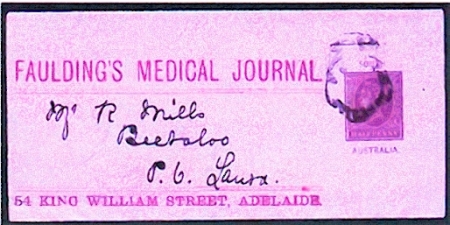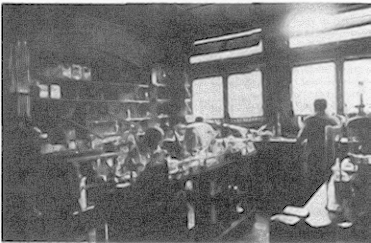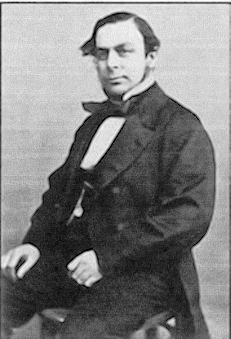This South Australian ½d wrapper which contained the Faulding’s Medical Journal is postmarked ADELAIDE, S.A., but the date is illegible. It was addressed to ‘Beetaloo, P.O. Laura’ which is somewhat surprising for although both towns are on the Northern route, Beetaloo was 335 km from Adelaide and Laura is only 230 km from Adelaide. Beetaloo P.O. was open only from March 1886 until March 1891, and Laura P.O. opened in 1872 (Source: The Post, Telegraph and Telephone Offices of South Australia and the Northern Territory, published by the author, Martin Walker, 2004), and as at this writing I do not know when this wrapper was introduced. The address for the Journal on the wrapper was 54 King William Street, Adelaide, (Figure 1).

Francis Hardey Faulding, manufacturing chemist, was born on 23 August 1816 and baptized at Swinefleet, Yorkshire, England, son of Francis Faulding, surgeon, and his wife Mary Ann, née Hardy. Influenced by his family environment and by the experimental work of Joseph Priestley (1733-1804), chemist and ‘discoverer’ of oxygen, young Faulding served an apprenticeship with his father and qualified as a chemist and surgeon. He sailed from Liverpool as a surgeon-superintendent in the emigrant ship Nabob and arrived at Sydney in February 1842. Seeking better opportunities he sailed in the Dorset for Adelaide, but found the economic slump deeper there than in Sydney.
He weathered the storm, and at 5 Rundle Street on 19 May 1845 he opened an establishment as ‘Chemist and Pharmicien’, assuring customers that he would stock only the purest and choicest drugs and personally supervise the dispensing of all prescriptions. He imported supplies from England but necessarily had to rely on his own manufacturing supplies. The pharmacy flourished and the premises were soon too crowded for the manufacturing and wholesale side of his business, so Faulding transferred it to a two-storied warehouse in Clarence Place, off King William Street. By 1850 he had many qualified employees, among them was Joseph Bosisto (see another article at this website).
His salesman traveled far into the country on horseback with packs of samples. The business suffered in the general exodus to the Victorian goldfields, but quickly revived as Faulding increased his supplies of remedial medicines for livestock, particularly after 1861 when he took on Luther Scammell (1858-1940), an English physician into partnership. The firm became very innovative, being the first to import chloroform, distributing cocaine preparations in 1858, producing olive oil from S.A. olives in 1864, and producing antiseptics (Solyptol) in 1867. The supply of cod liver oil was disrupted in WW II, and Faulding chemists found an alternate source in the white schnapper shark. When the supplies of sulpha drugs ran out, Faulding’s jointly with universities, synthesised sulphanilamide; Faulding’s were the first private enterprise to produce penicillin. A picture of Faulding’s laboratory in the late 19th century is seen in Figure 2.

In the late 19th century, F. H. Faulding & Co. expanded into Perth and Sydney. Under the stewardship of Luther Scammell’s sons, William and Luther Robert, the company was ready to face the challenges of the new century. In 1921, Faulding was incorporated into a private company. In 1968, Bill Scammell, great-grandson of Luther Scammell took over the reigns at Faulding. The firm of F.H. Faulding & Co., wholesale druggists and manufacturing chemists, survives as one of the oldest in Australian, but it was taken over by the Mayne Group Limited, Australia’s leading private health-care provider.
Faulding’s interests were not limited to his business for in 1849 he became a leading shareholder of the South Australian Building and Investment Society and in 1850 he was an active promoter of the abortive City of Adelaide Gas Light and Coke Co. In 1861-62 he was a member of the Adelaide City Council, a director of the Bank of Adelaide (1865) and a trustee of the Savings Bank of S.A. (1867).
Faulding married Eliza Macgeorge on 16 September 1852, and there was no issue from this marriage. Although Faulding was dedicated to the elimination of disease and squalor of afflicted humanity, he was not physically robust. He died on 19 November 1868 at ‘Wooton Lea’, the home that he built at Glen Osmond, S.A., which is now part of the Presbyterian’s Girls’ College. His estate was valued for probate at £56,000, and his bequests included generous sums to his relatives in England and to the missionary work of the Wesleyan Church. A picture of Faulding is seen in Figure 3.

Faulding’s Medical Journal Vol. 1, No. 1 (20 July 1899)-Vol. 6, No. 67 (20 Jan. 1905) is “devoted to medicine, diet and sanitary science” and became “The official organ of the Royal British Nurses Associations in Australia” from Mar. 1904-Jan. 1905, and the journal remained as the above official organ until July 1910 when it became the organ of the South Australian District Trained Nursing Society from Vol. 6 No.68 (Feb. 20, 1905) until Vol. 15, No. 173 on Nov. 20, 1913, at which time it became Faulding’s Medical and Home Journal, and publication finally ceased with Vol. 20 No. 240 on June1, 1919. However the firm continued the numbering in what became a staff magazine.
There was a longevity of 20 years from July 1899 until June 1919, with 20 volumes, and a total of 240 issues. So the earliest date for the wrapper would have been 20 July 1899, and the Beetaloo P.O was closed then. One would have thought that there was a closer post office for delivery of the Journal than at Laura, as shown on the wrapper.
This article was derived from multiple sources, with the primary source of information on F. H. Faulding being the on-line Australian Dictionary of Biography, and for Faulding’s Medical Journal the assistance of Brian Bingley, Research Team, State Library of South Australia is much appreciated.